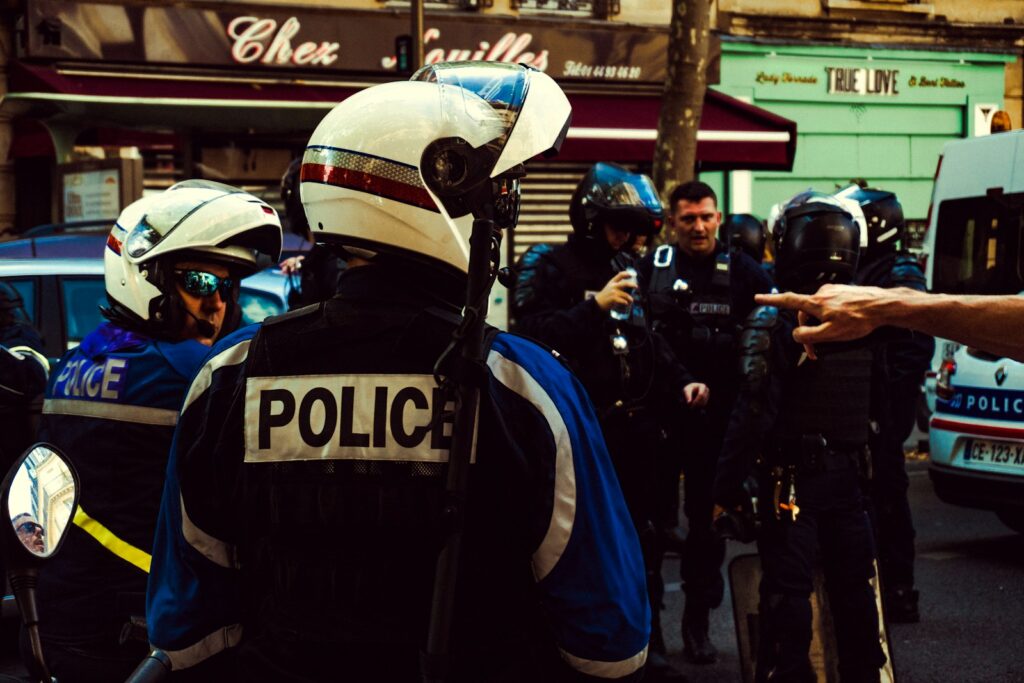
The sudden death of English singer-songwriter Liam Payne at the age of 31 has sent shockwaves across the globe, prompting an extensive investigation into the tragic circumstances of his passing. On October 16, the former One Direction band member died after falling from a hotel balcony in Buenos Aires, Argentina, marking a sombre end to a life lived largely in the public eye.
Initial reports from the scene indicated severe injuries, with medics declaring him dead immediately. The incident, which occurred at the Casa Sur Palermo hotel, quickly became a subject of intense scrutiny, with authorities in Argentina launching a comprehensive inquiry to ascertain the precise sequence of events leading to his demise. The complexity of the case, combined with Payne’s high profile, necessitated a meticulous approach to gathering evidence and drawing conclusions.
This article delves into the emerging details from the investigation, drawing exclusively from the official statements and reports released by Argentinian authorities and corroborated by UK inquests. We aim to present a clear, factual account of what is currently known about Liam Payne’s final moments, the medical findings, and the ongoing efforts to piece together the full picture of this profound tragedy.

1. **The Tragic Incident: Fall from a Hotel Balcony**On the afternoon of October 16, 2024, the news broke of Liam Payne’s sudden death. The British musician, known globally for his work with One Direction and his subsequent solo career, had fallen from the third floor of the Casa Sur Palermo hotel in Buenos Aires, Argentina. This unexpected event immediately triggered a police response and emergency medical services.
Emergency personnel from the Sistema de Atencio Medica de Emergencia (SAME) arrived at the scene following a 911 call. They found Payne’s body on an internal patio of the hotel. Medics noted that the singer had sustained “extremely serious injuries” and, despite their efforts, he was declared dead on the scene. The gravity of his injuries was such that resuscitation was deemed not viable by the first responders.
The hotel, located in the Palermo neighbourhood of Buenos Aires, became the focal point of a rapidly unfolding investigation. Authorities from Precinct 14B were directed to the hotel by the 911 call reporting the incident. The immediate aftermath involved securing the scene and beginning the initial evidence collection, setting the stage for a detailed forensic examination.

2. **Official Cause of Death: Polytrauma Confirmed**A day after the singer’s passing, an autopsy report provided the first official insights into the cause of death. The Argentina National Prosecutor’s Office confirmed that Liam Payne died of “polytrauma and internal and external bleeding.” This term, polytrauma, was subsequently reiterated as the medical cause of death at a UK inquest opening.
Polytrauma is a medical condition characterised by “multiple injuries, some of which may cause significant disability and may be life-threatening,” as described by the National Library of Medicine. The prosecutor’s office’s statement clarified this as “multiple traumatic injuries.” These injuries often involve multiple organs or systems and can result from severe accidents, such as falls from height.
The confirmation of polytrauma as the cause of death underscores the extensive and severe nature of the injuries Payne sustained in the fall. The preliminary autopsy indicated that these injuries were incompatible with life, leading to his instantaneous passing. This medical finding served as a crucial initial piece of information in the wider investigation.

3. **Autopsy Revelations: Injuries and Lack of Defensive Wounds**The preliminary autopsy conducted shortly after Liam Payne’s death provided a comprehensive outline of the injuries he sustained. Forensic experts found a total of 25 injuries “compatible with those produced by a fall from height.” These detailed findings were critical in understanding the mechanics of the fatal incident.
Crucially, the report highlighted that Payne’s brain and skull (cranioencephalic) injuries were “sufficiently suitable to cause death.” The internal and external hemorrhages in his skull, chest, abdomen, and limbs “contributed to the mechanism of death.” This indicated a devastating impact from the fall, affecting multiple vital systems within his body.
Perhaps one of the most significant revelations from the autopsy was the absence of defensive injuries. Forensic experts analysed the singer’s hands and body, concluding that they “did not find any defensive injuries.” This led them to believe that “all the injuries on the body were vital and produced at the same time, and that no injuries were observed that could suggest the intervention of third parties.”
Furthermore, the position of Payne’s body suggested that he “did not adopt a reflexive posture to protect himself and that he could have fallen in a state of semi or total unconsciousness.” This conclusion by the prosecutor’s office implied that Payne was not fully conscious or able to react to the fall, ruling out a conscious or voluntary act on his part and thus the possibility of suicide.

4. **Substances Found: A Complex Toxicology Profile**Following Liam Payne’s death, the investigation quickly moved to examine the circumstances surrounding his state of mind and any potential contributing factors. A critical aspect of this involved the collection and analysis of substances found in his hotel room. According to the Argentina National Prosecutor’s Office, “a series of substances were seized from the musician’s room, which would prove a previous situation of alcohol and drugs consumption.”
Subsequent reports provided a more detailed toxicology profile. In November, a report from the National Criminal and Correctional Prosecutor’s Office concluded that traces of “alcohol, cocaine and prescription antidepressants” had been detected in Liam’s system. Further details from sources with direct knowledge of the investigation revealed the presence of “pink cocaine” – a recreational drug typically a mix of methamphetamine, ketamine, MDMA and others – as well as benzodiazepine and crack.
The findings also included the discovery of an improvised aluminum pipe to ingest drugs in his hotel room. This array of substances indicated a complex situation of drug and alcohol use prior to his death. Additional studies were requested by the prosecutor’s office to determine whether alcohol or drugs were in Payne’s system at the exact time of his death, to provide a complete picture of his physiological state.

5. **Erratic Behaviour Preceding the Fall: The 911 Call**Minutes before Liam Payne’s tragic fall, a 911 call was placed from his hotel by a staff member, shedding light on his erratic behaviour. Audio of the call, obtained by Telemundo, revealed a hotel employee expressing significant concern about a guest who was reportedly under the influence of drugs and alcohol and had been destroying objects in their room.
The call did not explicitly name Payne, but it occurred minutes before his death, according to the prosecutor’s office. The hotel employee described an “aggressive man who could be under the influence of drugs or alcohol.” The transcript of the call further detailed: “Well, when he is conscious he breaks … the whole room. Well, we need you to send someone, please.”
The caller’s concern extended to Payne’s immediate safety, noting the presence of a balcony in the room. “And we need someone to be sent to us urgently, because well, I don’t know if he is at risk. The guest is in a room that has a balcony, and, well, we are a little afraid that he might do something life-threatening,” the employee stated, highlighting the clear apprehension among the hotel staff regarding the singer’s well-being.
Further CCTV footage reviewed by police appeared to show Liam Payne twice sleeping in the hotel lobby with a bottle of whiskey in his hand. These observations align with the distressed 911 call and painted a picture of a man in a vulnerable and agitated state in the hours leading up to the fatal incident, adding crucial context to the developing investigation.

6. **Liam Payne’s Personal Struggles: A History of Substance Abuse**Liam Payne had been open about his personal struggles with addiction prior to his death, a candidness that now provides a poignant backdrop to the tragic events. The singer had publicly addressed his history of substance abuse, and reports indicated he had gotten sober as recently as 2023, reflecting an ongoing battle with these challenges.
The findings from the investigation, including the substances detected in his system and the erratic behaviour observed by hotel staff, led the prosecutor’s office to infer that Payne “was going through some kind of breakdown as a result of substance abuse.” This suggests a relapse or a severe episode related to his addiction issues in the moments leading up to his fall.
Authorities, in their conclusions, firmly ruled out the possibility of a conscious or voluntary act on Payne’s part. They determined that “in the state he was in, he did not know what he was doing and could not understand it.” This implied that Liam hadn’t been fully conscious or was “in a state of noticeable decrease or abolition of consciousness,” thereby ruling out suicide as a deliberate act. Instead, the focus shifted to the overwhelming impact of substance influence on his actions and state of mind.

7. **Deeper Dive into Polytrauma: Medical Significance and Impact**While earlier reports confirmed polytrauma as the official cause of death, a deeper understanding of this medical condition illuminates the severity of Liam Payne’s injuries. Polytrauma is not merely a single injury, but rather a catastrophic state characterised by “multiple injuries, some of which may cause significant disability and may be life-threatening,” as defined by the National Library of Medicine. In Payne’s case, the prosecutor’s office specified “multiple traumatic injuries” affecting various vital systems.
Such extensive injuries are frequently associated with severe high-impact incidents, including falls from considerable heights. The preliminary autopsy findings were stark, detailing 25 injuries consistent with a fall, with specific emphasis on cranioencephalic (brain and skull) injuries. These particular injuries were deemed “sufficiently suitable to cause death,” indicating the immediate and overwhelming impact on his vital functions.
The combination of internal and external haemorrhages across his skull, chest, abdomen, and limbs collectively “contributed to the mechanism of death.” This highlights a rapid and devastating physiological shutdown. Medical research indicates that death due to polytrauma can occur instantaneously due to primary brain injury or significant blood loss, or shortly thereafter, underscoring the irreversible nature of the trauma Payne sustained.

8. **Crucial Witness Accounts**The ongoing investigation into Liam Payne’s death has gathered several witness accounts, providing critical context to the hours preceding his fall. Among these, the audio of a 911 call placed by a hotel staff member minutes before Payne’s death, obtained by Telemundo, stands out. The caller expressed urgent concern over an “aggressive man who could be under the influence of drugs or alcohol” and was “destroying objects in their room.”
During the call, the hotel employee conveyed serious apprehension for the guest’s well-being, specifically noting the presence of a balcony. The employee stated, “And we need someone to be sent to us urgently, because well, I don’t know if he is at risk. The guest is in a room that has a balcony, and, well, we are a little afraid that he might do something life-threatening.” This call provides a poignant snapshot of the heightened anxiety among hotel staff regarding Payne’s condition.
Beyond this immediate emergency call, officials interviewed five witnesses as part of their comprehensive inquiry. This group included three hotel workers who could offer insights into Payne’s behaviour during his stay, and two women who had been with Payne in his room in the hours leading up to his death. While these women were not present at the exact moment of the fall, their testimonies were crucial for establishing a timeline and understanding the environment in the preceding period.
Read more about: 14 Unbelievable Deaths: Unraveling the Alleged FBI Connections Behind High-Profile Tragedies

9. **Alleged Third-Party Involvement and Subsequent Charges**The investigation has evolved to consider potential third-party involvement, leading to formal charges against several individuals. The Argentina National Prosecutor’s Office confirmed that five people have been charged in connection with Payne’s death. Among them, the hotel’s manager, Gilda Martin, its receptionist, Esteban Grassi, and Payne’s friend, Roger Nores, have been charged with manslaughter.
Further charges were brought against Ezequiel Pereyra, another hotel worker, and Braian Paiz, a waiter, who face allegations of supplying drugs. This aspect of the inquiry follows reports of a “series of substances” found in Payne’s room, and the later toxicology report detailing the presence of “alcohol, cocaine and prescription antidepressants,” as well as “pink cocaine,” benzodiazepine and crack.
CCTV footage has also become a focal point, with police reviewing recordings that reportedly showed multiple drug exchanges between a dealer and a hotel employee prior to Payne’s death. Sources indicate that police are actively investigating whether this hotel employee provided Payne with drugs. This development introduces a new dimension to the case, probing beyond the immediate circumstances of the fall to potential external influences on his state.
Additionally, police identified the presence of two female escorts at the hotel in the hours before Payne’s death. Sources revealed that Payne had offered $5000 USD to these escorts, who were allegedly called via an app, though he did not pay them. The investigation also noted that a Rolex watch was found missing from Payne’s hotel room, adding further complexity to the ongoing inquiry into the events preceding his passing.
Read more about: A Comprehensive Review of Facebook: Tracing Its Evolution, Features, Controversies, and Enduring Global Impact

10. **The Ongoing Inquiry: Status and Challenges**The investigation into Liam Payne’s death remains an active and intricate process, officially classified as “doubtful/undetermined” in its initial phase, indicating a need for comprehensive examination before conclusive findings. While a UK inquest was opened, it was made clear that this hearing had no legal jurisdiction over the ongoing investigations in Argentina. Senior Coroner Crispin Butler noted that “procuring the relevant information to address particularly how Liam came by his death may take some time through the formal channel of the Foreign, Commonwealth and Development Office.”
Argentinian authorities continue to pursue multiple avenues of inquiry. The prosecutor’s office has stated that the investigation is “aimed at determining the possible involvement of third parties in the events prior to the victim’s death.” This includes the detailed examination of witness statements, forensic evidence, and the implications of the toxicology reports. The initial conclusion by the prosecutor’s office, ruling out a conscious or voluntary act due to Payne’s impaired state, has guided the focus towards contributing factors.
Further intensifying the investigation, Argentinian officials conducted a raid on the Casa Sur Palermo hotel on October 23 as part of their inquiry. Such actions are typically undertaken to secure additional evidence or corroborate existing findings. The complexities of international legal processes and the need for thorough verification underscore the protracted nature of this investigation, which seeks to provide a definitive account of the tragedy.
Meanwhile, the release of Payne’s body to his family for burial in England is dependent on the court’s findings in the criminal case. This highlights the interlinked nature of the forensic, criminal, and legal aspects of the investigation, all of which must progress sufficiently before the final closure of repatriation can occur, reflecting the methodical approach authorities are taking to ensure a complete understanding of the circumstances.
Read more about: Virginia Giuffre’s Family Condemns Mandelson’s Appointment: Unpacking the Epstein Controversy and Demands for Accountability

11. **Family’s Grief and Calls for Privacy**In the wake of Liam Payne’s untimely death, his family has navigated an immense period of grief, publicly requesting privacy to mourn their devastating loss. In a statement provided to the BBC, the family expressed their profound sorrow: “Liam will forever live in our hearts and we’ll remember him for his kind, funny and brave soul.” They affirmed their commitment to supporting each other, stating, “We are supporting each other the best we can as a family and ask for privacy and space at this awful time.”
Payne leaves behind his young son, Bear, shared with his former partner Cheryl Cole, who was among the mourners at his funeral. His parents and sisters also face the immense task of processing this tragedy. The depth of their loss is immeasurable, compounded by the very public nature of Liam’s life and death, which has attracted global media attention.
His father, Geoff Payne, travelled to Buenos Aires shortly after the incident on October 18, reportedly to facilitate the repatriation of his son’s body for burial in England. This heartbreaking task underscores the personal dimension of the tragedy, as the family sought to bring Liam home amidst the ongoing legal and forensic procedures in Argentina.
Liam Payne’s funeral was ultimately held in Amersham, Buckinghamshire, in November. It was a solemn occasion where his former bandmates from One Direction—Harry Styles, Louis Tomlinson, Niall Horan, and Zayn Malik—were present, alongside his girlfriend Kate Cassidy and Cheryl. The gathering marked a poignant moment of collective remembrance and sorrow for those closest to the singer.
Read more about: A Name Etched in Memory: The Dramatic Stories of Jennifers Who Faced Life’s Darkest Shadows

12. **Liam Payne’s Lasting Career Legacy**Liam Payne’s life, though cut tragically short, left an indelible mark on the music industry, particularly through his pivotal role in the global phenomenon One Direction. Emerging from *The X Factor* in the 2010s, the boyband quickly ascended to international superstardom, captivating millions of fans worldwide with their pop anthems and charismatic stage presence. Payne, known for his vocal contributions and songwriting, was an integral part of this unparalleled success.
Following One Direction’s indefinite hiatus in January 2016, Payne embarked on a solo career, demonstrating his versatility and artistic evolution. His solo work allowed him to explore different musical avenues and connect with audiences on a more personal level. His contributions to music, both within the band and as a solo artist, cemented his status as a recognisable name in pop music globally.
Payne’s journey, from aspiring talent to a celebrated international artist, served as an inspiration to many. His music resonated with a vast fanbase, and his influence extended beyond chart performance, shaping a generation of listeners. The outpouring of tributes from fans and collaborators alike underscores the significant impact he had on countless lives, both through his artistry and his public persona.
His openness about his personal struggles, though ultimately linked to the tragic circumstances of his death, also left a complex legacy of vulnerability and honesty. This candidness, alongside his musical achievements, forms part of the enduring memory of Liam Payne, reminding the world of the multi-faceted artist whose presence in the music world will be profoundly missed.
Read more about: Gone Too Soon: Heartbreaking Stories of Celebrities Who Died From Cancer Before Age 50
The emerging details from the comprehensive investigation paint a sorrowful picture of the final moments of a globally cherished artist. The ongoing efforts by Argentinian and UK authorities underscore the commitment to fully understand the intricate circumstances of Liam Payne’s death. While the full truth is still being pieced together, the revelations highlight the profound challenges he faced and the devastating impact of his passing on his family, friends, and legions of fans worldwide. His musical legacy, however, remains a beacon, a testament to the talent that shone so brightly, even as his personal battles ultimately led to this tragic conclusion.




